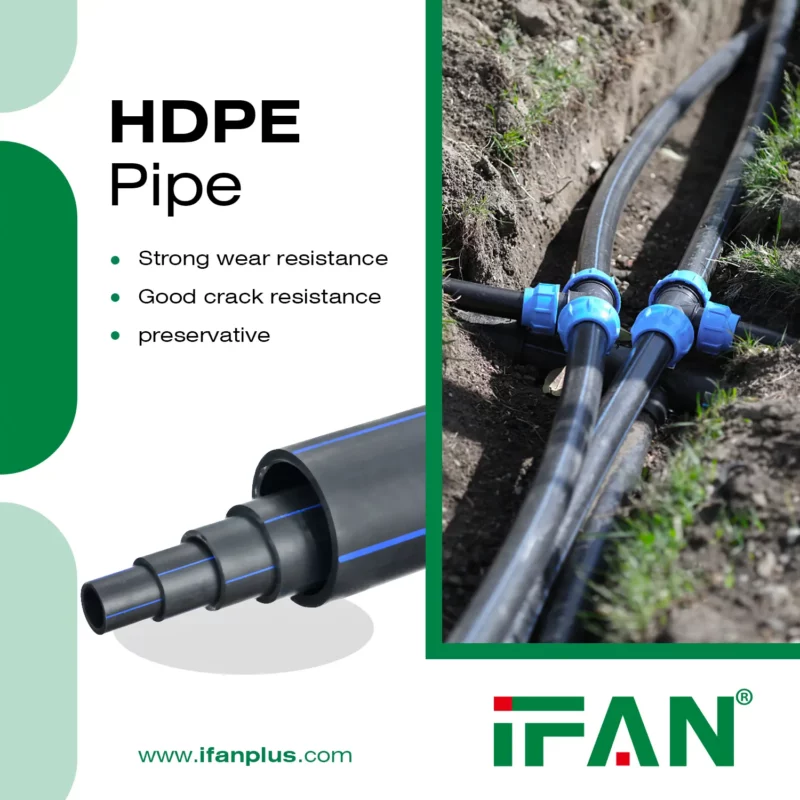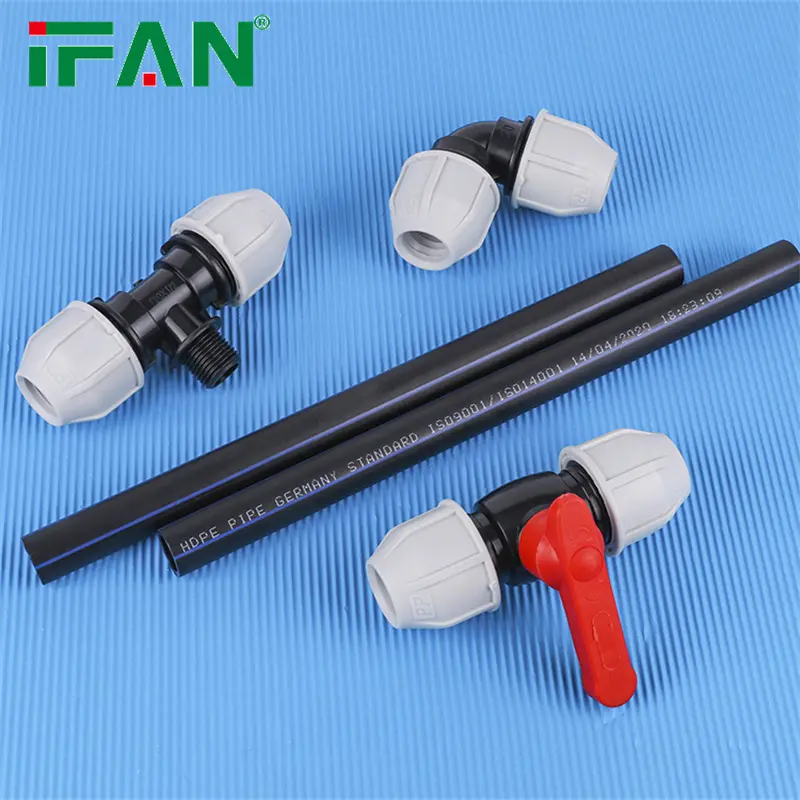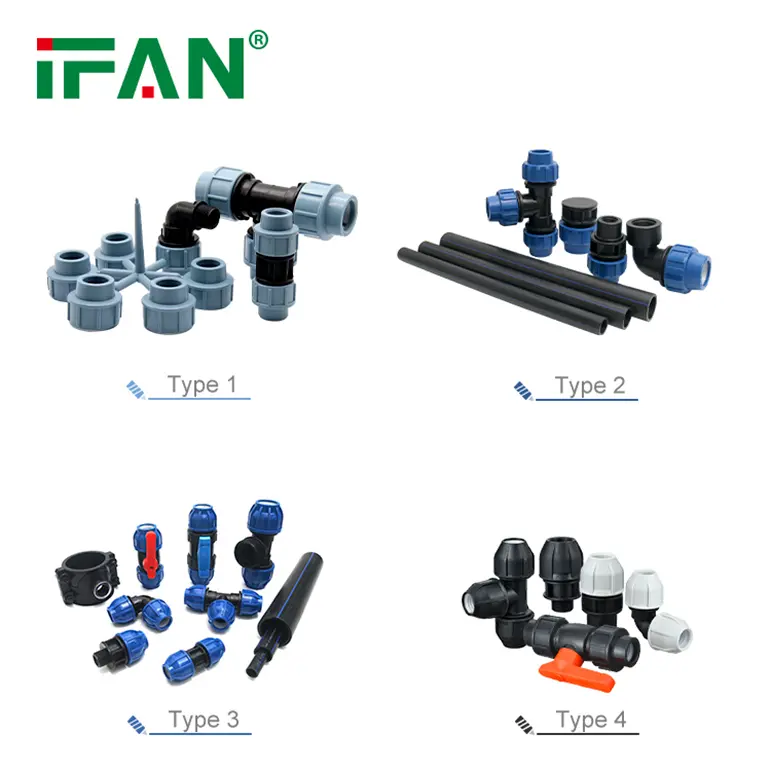Introduction
High-Density Polyethylene (HDPE) pipes are widely recognized for their exceptional performance in various applications. This article provides a comprehensive analysis of HDPE pipe performance characteristics, covering aspects such as pressure rating, durability, flexibility, and resistance. Understanding these factors is crucial for selecting the appropriate piping solution for different needs.
Pressure Rating
HDPE pipes are categorized by their pressure ratings, which indicate their ability to withstand internal pressure. The pressure rating is usually denoted by classes such as PN6, PN10, PN16, etc. Each class represents the maximum pressure the pipe can handle safely. For example, a PN10 HDPE pipe is designed to withstand pressures up to 10 bar. This makes HDPE suitable for applications ranging from low-pressure water distribution to high-pressure gas transportation. The ability to handle varying pressure levels ensures that HDPE pipes can be used in diverse environments without compromising safety.
Durability
One of the key advantages of HDPE pipe is their durability. They are known for their long service life, often exceeding 50 years under normal conditions. HDPE pipe are resistant to impact and abrasion, making them suitable for demanding environments. For instance, in mining operations where pipes are subjected to harsh conditions, HDPE’s resistance to wear and tear proves beneficial. The durability of HDPE reduces the need for frequent replacements and repairs, contributing to lower long-term maintenance costs.
Flexibility
HDPE pipe are renowned for their flexibility, which allows them to bend and accommodate ground movement without cracking. This characteristic is particularly useful in areas with unstable soil or where ground movement is expected. For example, in earthquake-prone regions, the flexibility of HDPE pipes can prevent breakage during seismic events. The ability to bend around obstacles and adapt to changes in alignment reduces the need for additional fittings, simplifying installation and reducing costs.
Chemical Resistance
HDPE pipes exhibit excellent chemical resistance, making them suitable for handling a wide range of substances. They can withstand exposure to acids, bases, and salts without degrading. This property is advantageous in industries such as chemical manufacturing and wastewater treatment. For example, HDPE pipes used in chemical processing facilities can handle aggressive chemicals without corroding or leaching harmful substances. The chemical resistance of HDPE ensures the integrity of the piping system and the safety of transported fluids.
Temperature Tolerance
HDPE pipes have a notable tolerance for temperature variations. They can typically handle temperatures up to 60°C (140°F) without losing their structural integrity. Some specialized HDPE pipes can manage higher temperatures. For instance, HDPE pipes used in hot water systems are designed to withstand temperatures above the standard range. In cold climates, HDPE pipes can also perform well without becoming brittle. This temperature tolerance makes HDPE pipes versatile for various applications, including both hot and cold water distribution.
Impact Resistance
Impact resistance is another significant performance characteristic of HDPE pipes. They are designed to absorb and dissipate impact energy, reducing the risk of damage. This feature is particularly important during installation and in environments where mechanical impacts are common. For example, in construction sites, HDPE pipes can withstand accidental drops or heavy equipment impacts without cracking. The impact resistance of HDPE pipes enhances their reliability and longevity in challenging conditions.
Resistance to UV Radiation
HDPE pipes can be exposed to sunlight and ultraviolet (UV) radiation without significant degradation, thanks to UV stabilizers added during manufacturing. This property is crucial for applications where pipes are installed above ground. For example, irrigation systems that are exposed to sunlight benefit from HDPE’s UV resistance. This ensures that the pipes remain functional and do not degrade or become brittle over time due to UV exposure.
Leak Prevention
The design of HDPE pipes contributes to effective leak prevention. The seamless, joint-free construction reduces the potential for leaks at connections. When HDPE pipes are joined using heat fusion or electrofusion methods, they create a continuous, leak-proof system. This feature is vital for applications such as water supply and wastewater management, where leaks can lead to significant issues. For example, in municipal water distribution systems, HDPE pipes provide a reliable solution for preventing leaks and maintaining water quality.
Installation Ease
HDPE pipes are relatively easy to install compared to traditional materials. Their lightweight nature reduces the need for heavy equipment and simplifies handling. Additionally, the flexibility of HDPE pipes allows for easier bending and alignment, minimizing the need for numerous fittings. For example, in trenchless installation methods, such as horizontal directional drilling, HDPE pipes can be installed with minimal disruption to the surrounding environment. The ease of installation contributes to faster project completion and cost savings.
Environmental Impact
The environmental impact of HDPE pipes is generally positive due to their long service life and recyclability. HDPE is a recyclable material, which means that used pipes can be reprocessed into new products. This reduces the amount of waste generated and supports sustainable practices. Additionally, the longevity and durability of HDPE pipes mean fewer replacements are needed, further decreasing environmental impact. For example, in large infrastructure projects, the use of HDPE pipes contributes to reduced waste and resource consumption over time.
Cost-Effectiveness
HDPE pipes offer cost-effective solutions due to their durability, low maintenance requirements, and ease of installation. While the initial cost may be higher than some traditional materials, the long-term benefits often outweigh this. The reduced need for repairs and replacements, coupled with lower installation costs, makes HDPE a cost-effective choice for many applications. For instance, in large-scale water distribution projects, the overall cost savings associated with HDPE pipes can be significant.
Conclusion
HDPE pipes are known for their impressive performance characteristics, including pressure rating, durability, flexibility, and resistance to chemicals, temperature, and impact. Their ability to prevent leaks, ease of installation, and positive environmental impact further enhance their appeal. Whether used in water supply systems, chemical processing, or agricultural irrigation, HDPE pipes offer a reliable and cost-effective solution. Understanding these performance characteristics helps in selecting the right piping material for various applications, ensuring efficiency and long-term reliability.
If you have read this article and have any questions, please feel free to contact IFAN. Below is our contact information:
Whatsapp:+86 13373827623
Email:[email protected]
























































